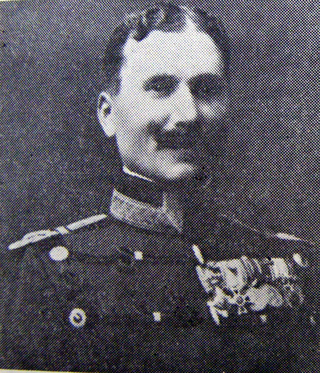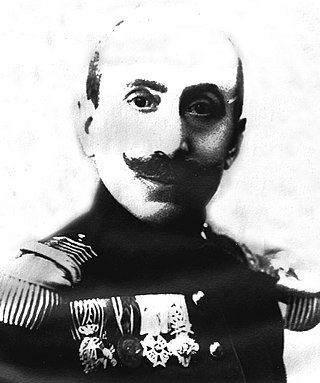
The Battle of Turtucaia, also known as Tutrakan Epopee in Bulgaria, was the opening battle of the first Central Powers offensive during the Romanian Campaign of World War I. The battle lasted for five days and ended with the capture of the fortress of Turtucaia and the surrender of its Romanian defenders.

Mihail Lascăr was a Romanian general during World War II and Romania's Minister of Defense from 1946 to 1947.

Eremia Teofil Grigorescu was a Romanian general who served as the commander of the 1st Romanian Army during the First World War. He also served as Minister of War in the Constantin Coandă cabinet.

The Third Battle of Oituz was a confrontation between Romanian and, to a lesser extent, Russian forces on one side and German and Austro-Hungarian forces on the other, during the Romanian Campaign of World War I. The battle took place primarily in the Oituz valley on the border between Hungary and Romania, from 8 to 22 August 1917.

Constantin Kirițescu was a Romanian zoologist, educator and historian. Born and schooled in Bucharest, he occupied successive posts in the Education Ministry, with education being a running theme of his diverse interests. He was among the founders of the Romanian Academy of Sciences.

Constantin Cristescu was a Romanian lieutenant general during World War I, and Chief of Staff of the Romanian Army.

Ernest Broșteanu was a Romanian general during World War I, best known for his leading role in the 1918 Romanian military intervention in Bessarabia.

Ioan Popovici was a Romanian general and commander of the Romanian 1st Army Corps from 1916 to 1918 during World War I.

Ioan Popovici was a Romanian general assigned to the general staff headquarters, during World War I. He attended the Școala Militară de Infanterie și Cavalerie in Bucharest from 1885 to 1887. Afterward he rose through the ranks until he became a brigadier general in 1916 as World War I was raging, engulfing Romania. He was known as "Epure" to distinguish him from another Romanian general with the same name.

After a series of quick tactical victories on the numerically overpowered Austro-Hungarian forces in Transylvania, in the autumn of 1916, the Romanian Army suffered a series of devastating defeats, which forced the Romanian military and administration to withdraw to Western Moldavia, allowing the Central Powers to occupy two thirds of the national territory, including the state capital, Bucharest.

The Battle of Dragoslavele was a military engagement fought between Romanian forces on one side and Central Powers forces on the other. It was part of the Romanian Campaign of World War I. The battle resulted in a Romanian victory and the effective end of Central Powers advances in the area.

David Praporgescu was a Romanian brigadier general during World War I, who was killed in action at the start of the Battle of the Southern Carpathians.

Constantin Teodorescu was one of the generals of the Romanian Army in the First World War. He is most known for serving as division commander in the 1916 campaign.

Hermann Friedrich Staabs, von Staabs was a German infantry general in World War I and commanding general of the XXXIX. Reserve Corps.

Grigore Simionescu was a Romanian officer who was one of the generals of the Romanian Army in World War I. He served as divisionary commander in the 1916 campaign.

Dumitru I. Cocorăscu was a Romanian general who was one of the generals of the Romanian Land Forces in World War I. He served as a brigade commander and division commander in the 1916 campaign.

Nicolae Sinescu (1865-1934) was one of the generals of the Romanian Land Forces in the First World War. He served as a cavalry division commander in the 1916 and 1917 campaigns.

Dumitru Stratilescu, sometimes spelled as Dumitru Strătilescu, was a Romanian general and military commander. During World War I, he commanded the First, Third, Fourth, and Fifth corps of the First Army of Romania.

Gheorghe Văleanu was a Romanian major general and military commander. During the First World War he commanded VI., IV. and II. corps and was notable in the Battle of Mărăști and the Third Battle of Oituz.

The vânători were a light infantry unit of the Romanian Army established on 1 July 1860. Compared to the regular infantry units, the vânători specialized in close combat and high-precision firing on enemy positions, ambush actions, and had greater mobility on the field. In addition, the vânători units also carried out protocol missions and guarded the royal and princely residences in Bucharest, Cotroceni, and Peleș, as well as the headquarters of the Ministry of War.




















